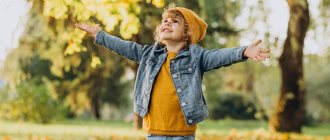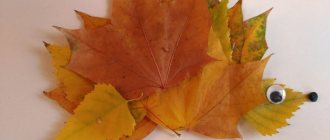Thematic planning on the topic Hello kindergarten
Thematic planning for the week of 09/03/18. — 09/07/18
Topic of the week: “Hello Kindergarten!”
Goal: formation of ideas about kindergarten, assistance in adaptation.
Tasks:
1. Creating conditions for the successful adaptation of children to the conditions of kindergarten.
2. Introducing children to the premises and equipment of the group room (personal locker, crib, toys), with the rules of behavior in kindergarten (do not push, do not run up the steps, say hello and goodbye.
3. Formation of an emotionally positive attitude towards the kindergarten, teacher, and other children (desire to go to kindergarten, call the teacher by name and patronymic, show interest in activities
peers, play nearby without interfering with each other, do not take away toys, do not quarrel).
Responsible:
Khakimova I.V.
| Days of the week | Type of adult-children (partner) activity | Form of organization of adult-children (partnership) activities | Target | Organization of subject-development environment | Interact vie with parents | |
| Morning: joint activities of adults and children | Consultation for parents “Adaptation of children in kindergarten” | |||||
| Monday 09/03/2022 | Communicative activity (speech development) | With subgroup ( ) conduct a conversation “Conversation “What we like to do in kindergarten.” | teach children to listen to their interlocutor and express their thoughts | Place the pictures “Kindergarten. Rules of conduct in kindergarten" | ||
| Perception of fiction (artistic and aesthetic development) | Suggest to subgroup ( ) look at the illustrations in the book | Place in the center of the book | ||||
| Morning: expected independent activities of children | ||||||
| Play activity | Subgroup Putting together a puzzle. | Develop in children the ability to assemble a picture from parts | puzzles | |||
| Classes | ||||||
| Artistic and Aesthetic Development (musical and artistic activities) Cognitive development. (Cognitive and research activities) | According to the plan of the muses. Employee. Frontal Theme "Our group" Frontal | Acquaintance with the name, location and purpose of individual rooms, with a group room. Placement of toys and household items. | Lesson in the music room Group centers | |||
| Walk ( see card index of walks | ||||||
| Joint activities between children and adults | ||||||
| Reading fiction (artistic, aesthetic, speech development) | Frontal Reading K. Chukovsky “Doctor Aibolit.” | To develop an interest in reading fiction. Develop speech attention (listen carefully to a fairy tale). | Place the book by K. Chukovsky “Doctor Aibolit” in the center of the book. | |||
MAGAZINE Preschooler.RF
Program content: 1. Creating conditions for the successful adaptation of children to the conditions of kindergarten. 2. Acquaintance of children with the premises and equipment of the group room (personal locker, crib, toys), with the rules of behavior in kindergarten (do not push, do not run up the steps, say hello and goodbye). 3. Formation of an emotionally positive attitude towards the kindergarten, the teacher, and other children (the desire to go to kindergarten, call the teacher by name and patronymic, show interest in the actions of peers, play nearby without interfering with each other, do not take away toys, do not quarrel).Direct educational activities in educational areas: “Cognition” (development of sensory culture) In order to implement the program content of the topic, it is advisable to use: Situational conversation “My favorite toy.” Learn to name, examine and describe a toy, highlighting its external features (color, shape). Talk about how you can play with this toy.
“Cognition” (development of horizons), “Work” (man-made world) In order to implement the program content of the topic, it is advisable to use: Targeted walk around the group. Form an orientation in the room of your group. Learn to answer the questions “Where does our soap live?”, “Where does Natasha’s high chair (crib, cabinet) live”, etc.
“Communication”, “Reading fiction” In order to implement the program content of the topic, it is advisable to use: Conversation “Our toys” Develop understanding of adult speech. To develop skills in finishing words and accompanying poetic works with playful actions (when reading poems by A.L. Barto from the “Toys” cycle).
“Artistic creativity” (modeling) In order to implement the program content of the topic, it is advisable to use: Modeling “Tumbler” Introduce plasticine, teach how to use it carefully. Develop the ability to roll out a lump of plasticine in a circular motion.
“Artistic creativity” (construction) In order to implement the program content of the topic, it is advisable to use: Construction “House for the ball”. Introduce children to floor building materials. To develop the ability to construct buildings according to a model.
“Music” In order to implement the program content of the topic, it is advisable to use: - for listening - “Sun” (music by M. Rauchweger, lyrics by A. Barto); — for singing — “Water” (music by E. Tilicheeva, lyrics by A. Shibitskaya).
It is advisable to include in the content of a subject-specific developmental environment on the topic for children’s independent educational activities: - handkerchiefs, rattles, ribbons for children’s independent play; - paper, pencils, templates; — noise instruments for independent music playing; — samples of buildings, illustrations of buildings for children’s constructive activities; — illustrations about summer, picture books by A.L. Barto; - objects and substitute objects for examination by shape, color, material of which they are composed.
To carry out educational activities in the family on the topic, it is advisable to recommend that parents: - show and name real objects in the immediate environment; - involve the child in performing simple work tasks; - read folk nursery rhymes with your child at home, books by K. Chukovsky, A. Barto; — get acquainted with the rules of behavior in kindergarten to discuss them with the child at home; — get acquainted with a card index of nursery rhymes and poems for family games and walks.
Joint educational activities on the topic in special moments: Morning: - conducting game situations with the aim of learning children's names and getting to know the kindergarten staff; - organizing familiarization with your locker; n- conducting game situations in order to familiarize children with dressing procedures; - conducting finger gymnastics “Friendly Family”, “A Bird Sat on the Palm”, etc., - conducting game situations with a “Dirty Doll”; — conducting exercises of an imitative nature (how birds fly, etc.); — conducting didactic games to enrich the sensory experience of children; — organizing games with floor and tabletop building materials; - use of basic verbal instructions “Bring the car”, “Take the ball”, etc.; - the use of literary words in communication with children (“Our Masha is little”, “Our ducks in the morning”, etc.); — conducting inspections of the group room premises (arts corner, games corner, music corner, etc.).
Hygiene procedures: - situational conversations about the importance of self-washing hands; — situational conversations about the correct use of a towel; - game problem situations for the purpose of learning to use individual objects (handkerchief, napkin, towel, comb, potty) - use of nursery rhymes about water, washing; — game situations for teaching the order of dressing and undressing; — game situations “Let’s show Katya how to soap her hands”, “How Katya uses a towel”, etc.
Breakfast, lunch, afternoon snack, dinner: - conversations about the rules of behavior at the table (chew with your mouth closed, use a napkin, drink from a cup); — motivating children to eat (“Masha and Porridge”, music by T. Nazarova, lyrics by N. Naydenova); - use of nursery rhymes about eating; — game situations “Masha the doll is having lunch”, “Let’s teach Katya to hold a spoon correctly”, etc.
Walk - observing objects in your immediate environment; a targeted walk around the kindergarten site; examination of site equipment; — outdoor games “Birds are flying”, “Sparrows and a car”, “Birds in nests”, etc.; — individual work on the development of basic movements; - labor on the site (collect twigs, put toys in a basket); - independent activities of children's choice.
Evening: - conducting a tour of the group room; - listening to “Sun” (music by M. Rauchweger, lyrics by A. Barto); — game-activities “Let’s roll the doll”, “Choose a toy”, “Let’s feed the doll Katya”, “Let’s dress the doll after sleep”, etc.; — reading poems by A. Barto from the “Toys” cycle; - looking at picture books; - use of game situations “The cubes have fallen apart”, “Let’s help our Tanya find the lost ball”, “We are meeting a new child in the group”, etc.; — putting things in order in the playroom.
Evening walk: - games with elements of imitation of the movements of familiar animals; — observations of birds arriving at the site; - independent activities of children's choice.
Approximate plan of educational work with children 3-4 years old Topic: “Hello, kindergarten” Program content: 1. Expanding ideas about kindergarten (music room, gym, etc.), professions of kindergarten staff (teacher, assistant teacher, music manager, nurse). 2. Clarifying knowledge of the rules of behavior in kindergarten (calmly go up and down the stairs, hold on to the railings, open and close the door while holding the door handle). 3. Formation of friendly relationships with peers (communicate calmly, without shouting, play together, share with other children), desire to return to kindergarten.
Direct educational activities in educational areas: “Cognition” (development of sensory culture, construction) In order to implement the program content of the topic, it is advisable to use: Situational conversation “Builder’s corner in our group” Strengthen the ability to highlight the color, shape, size of parts of tabletop and floor building materials. Introduce elementary examples of buildings (houses, turrets, etc.).
“Cognition” (development of horizons), “Work” (man-made world) In order to implement the program content of the topic, it is advisable to use: A targeted walk around the kindergarten (music hall) Develop the ability to navigate in the music hall, a sense of security. Learn to name and examine objects in the room, make simple generalizations (musical instruments, rattles, flags, etc.).
“Communication”, “Reading fiction” In order to implement the program content of the topic, it is advisable to use: Situational conversation “Guests have come to us” Introduce children to examples of addressing adults who have come to the group (Hello, Please come in, Goodbye, Come to us more). Learn to direct your speech to your interlocutor, improve the ability to clearly pronounce vowels and some consonants.
“Artistic creativity” (modeling) In order to implement the program content of the topic, it is advisable to use: Modeling “Plates” Learn to transform a round shape into a disk, flatten the ball with your finger.
“Artistic creativity” (construction) In order to implement the program content of the topic, it is advisable to use: Construction “Turret” Exercise children in distinguishing and naming the main building parts. Learn to build according to a model. Develop skills in analyzing created buildings.
“Music” In order to implement the program content of the topic, it is advisable to use: - for listening - “Sun” music. M. Rauchweger, sl.A. Barto, "Rain" music. N. Lyubarsky; - for singing - “Bucket Sun” music. V. Karaseva, lyrics. Folk.
It is advisable to include in the content of a subject-specific development environment on the topic for children’s independent educational activities: - paper, pencils, templates; — attributes for role-playing games “Home”, “Shop”, etc.; — equipment for basic experimentation with water and sand; - didactic doll; — musical instruments, a screen for organizing “concerts for friends and favorite toys”; — schemes, algorithms for washing, hardening.
To carry out educational activities in the family on the topic, it is advisable to recommend that parents: - show and name real objects in the child’s immediate environment, replenishing the children’s active stock with new words; - comment on your actions while doing homework and encourage children to help adults and repeat their actions and speech comments; - involve children in carrying out feasible tasks at home; — poems about summer for reading and memorizing with children; — create an album “I’m in kindergarten” to form a child’s portfolio.
Joint educational activities on the topic at special times: Morning: - conducting imitative exercises with elements of sound differentiation (“Like mice - like bears”, etc.); — conducting inspections of the group room premises (arts corner, games corner, music corner, book corner, etc.); - use of orientation tasks in the premises of your group; - conducting game situations in order to reinforce basic rules of behavior in kindergarten; - use of game situations with a didactic doll in order to consolidate the sequence of dressing and undressing; — use of labor orders for the preparation of materials for games, drawing, modeling, etc.; — conducting didactic games to develop the ability to group objects according to several sensory attributes; — organizing simple experiments to examine objects; - use of samples of verbal formulas of speech etiquette (when addressing adults who come to kindergarten, etc.); - examination of pictures, illustrations depicting summer natural phenomena, photographs of children in kindergarten; - use of literary words in communication with children; — organizing and conducting finger gymnastics, finger theater games;
Hygiene procedures: - situational conversations about the rules of washing; — game problem situations with the aim of developing basic hardening skills “Rinsing the mouth with cool water after eating”; — game situations with a didactic doll to teach the order of dressing and undressing; — game problem situations with the aim of teaching the ability to take care of your appearance “How to walk without laces”, “Do you need to fasten your sandals?” and etc.; - use of nursery rhymes about water, washing; - situational conversations for the purpose of naming the colors of children’s clothes, comparing sizes, agreeing nouns with the numerals one and many.
Breakfast, lunch, afternoon snack, dinner: - conversations about the rules of behavior at the table (use a napkin, tablespoon and teaspoon); - the teacher’s story about the dishes that children eat and their benefits; - conversations about the work of a cook; - use of nursery rhymes about eating;
Walk: - observing objects in the immediate environment, comparing them by size, shape (tall, low houses, trees; rectangular windows, round balls, etc.), autumn changes in nature (it got colder, the leaves turned yellow); - outdoor games “Run to me”, “Sparrows and a car”, “Train”, “Catch the ball”, etc.; — individual work on the development of basic movements; - labor on the site (collect twigs, put toys in a basket); - independent activities of children's choice.
Evening: - organization of role-playing games “Home”, “Shop”; — organization of theatrical activities based on familiar fairy tales using finger theater; - listening to “Rain”, music. N. Lyubarsky; — reading “Moidodyr” by K.I. Chukovsky; - didactic games with objects to familiarize yourself with the tangible properties of objects; — putting things in order in the playroom.
Evening walk: - folk role-playing game “Geese-geese”; - riding a tricycle in a straight line; — observations of autumn changes in nature; - independent activities of children's choice.
| Next > |




